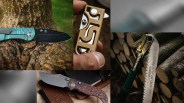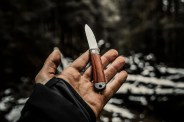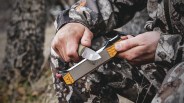A sharp knife is a safe knife. These aren’t just words to live by if you go hunting, camping or fishing on a regular basis. In a dire survival situation, a well-honed blade can be a lifeline.
Skinning a deer, cleaning a fish and chipping away at branches to make a shelter all require a certain degree of accuracy and efficiency you can’t get if your blade is butter-knife dull. So it’s always a good idea to keep an eye on the state of your knife’s edge and make sure it’s razor sharp before heading outdoors.
If the edge just needs a simple tune-up before a camping trip — or if you found grandpa’s old combat knife and it’s burred and chipped — bringing a blade back to straight-razor quality is relatively easy. It takes a little more time and patience depending on the wear, but every step gets you closer to a safer blade.
1. Pick the right whetstone
The more severely damaged your blade is the more coarse a whetstone you’ll want to start with. If the blade’s edge has burrs or is dangerously dull, start off with a whetstone as coarse as 220 grit.
If the blade is only somewhat dull, start with a medium-Arkansas stone around 600 grit. And for blades that just need a fine polish or tune-up, go right to a soft-Arkansas stone 1,000 grit or more.






